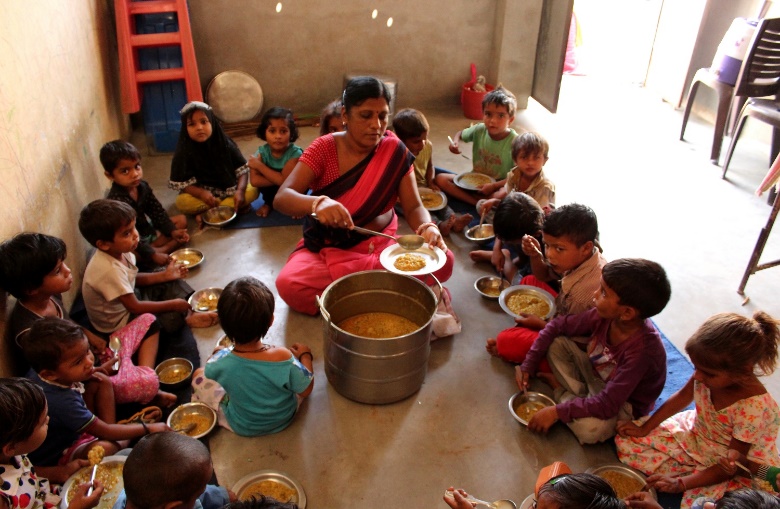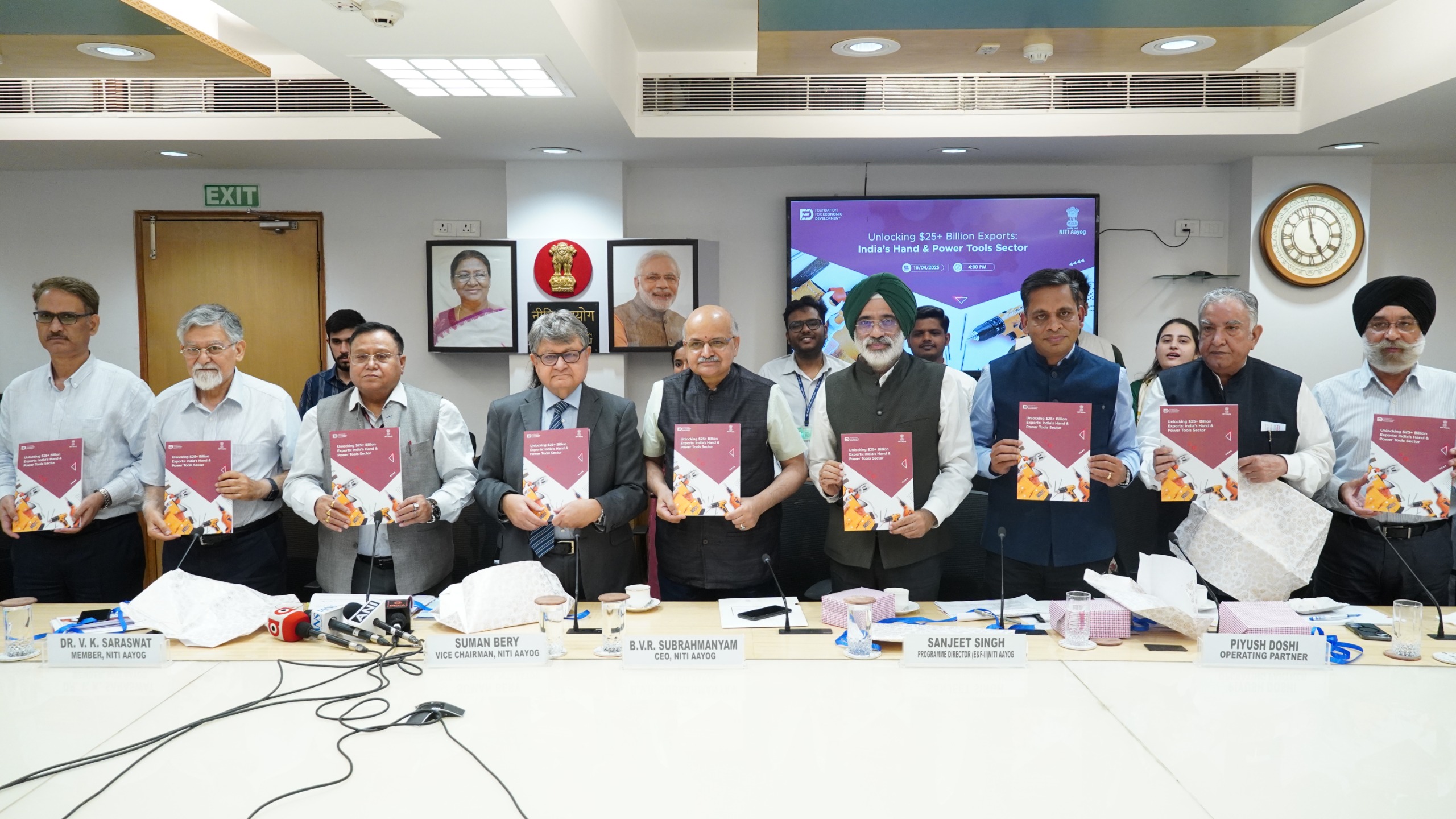- Courses
- ABOUT US
- OUR TOPPERS
- TEST SERIES
- FREE STUDY MATERIAL
- VIDEOS
- CONTACT US
Poshan Bhi, Padhai Bhi
Poshan Bhi, Padhai Bhi


Latest Context
Recently, The Union Minister for Women and Child Development released the government's flagship program 'Poshan Bhi, Padhai Bhi' which will lay emphasis on Early Childhood Care and Education (ECCE) at anganwadis across the country. It is an important component of Mission Saksham Anganwadi and Poshan 2.0 (Mission Poshan 2.0) which is mentioned under the National Education Policy.
Main Highlights of the Program
- Its objective is to transform Anganwadi canters into not just nutrition hubs but also education-imparting canters.
- Rs 600 crore for the training of Anganwadi Workers (AWW) has been allocated by the Ministry to effectively implement ECCE.
- The National Institute of Public Cooperation and Child Development (NIPCCD) will provide training for Anganwadi workers.
- The ECCE program will prioritize education in the mother tongue, aligning with the principles of the New Education Policy.
- By introducing change through “Poshan bhi, Padhai bhi”, ECCE policy ensures that every child would be provided with at least two hours of high-quality preschool instruction daily.
Anganwadis
- Conceptual Framework: As a part of the Integrated Child Development Services (ICDS) program, a rural childcare center named Anganwadi was established. It plays a very important role in providing basic health care, nutrition, and early childhood education to children below the age of six. The meaning of the term "anganwadi" is "courtyard shelter".
- Scope: There are approximately 13.9 lakhs operational Anganwadi canters across the country. They are providing supplementary nutrition and early care and education to approximately 8 crore beneficiary children under the age of 6 years making it the largest public provisioning of such services in the world.
- Role and Responsibilities of AWW: There are many responsibilities that are being fulfilled by the Anganwadi which are as follows.
- To organize non-formal preschool activities: It is the duty of the Anganwadi to organize the non-formal preschool activities for children in the age group 3-6 years and to assist in designing and making of toys and play equipment of indigenous origin for use in anganwadis.
- Nutrition Centers: They serve as nutrition centers for the distribution of supplementary nutrition like take-home rations or hot cooked meals to children and pregnant/lactating women with an objective to address malnutrition and improve overall health. They are also meant to provide health and nutrition education and counselling to breastfeeding/ Infant & young feeding practices to mothers.
- Family Planning: AWW works in close relationships with the locals. Hence, they are expected to encourage married women to adopt family planning/birth control measures. These centers also provide information with regards to births in a month with the Panchayat Secretary/Gram Sabha Sewa whosoever has been notified as Registrar/Sub Registrar of Births & Deaths in her village.
- Providing Help to Accredited Social Health Activists (ASHA): It also provides help to the ASHA workers engaged under the National Rural Health Mission in the delivery of healthcare services and maintenance of records under the ICDS Scheme. In addition, it also identifies the disability among children during her home visits and refers the case immediately to the nearest Primary Health Center (PHC) or District Disability Rehabilitation Centre. It also supports organizing Pulse Polio Immunization (PPI) drives.

Issues faced by Anganwadis
- Low Remuneration: Anganwadi workers and helpers often receive very low compensation for their work which demotivates them and which in turn affects the quality of services provided by them. Low remuneration creates hurdles in recruiting skilled persons and in their retention.
- Inadequate Infrastructure: Many Anganwadi centers do not have proper infrastructure, including basic amenities like toilets, clean water, and sufficient space for children to learn and play. In addition, there is a shortage of trained staff, including Anganwadi workers and helpers, in many Anganwadi centers.
- Monitoring and Evaluation: The mechanism of monitoring and evaluation to assess the impact and effectiveness of Anganwadi services is very poor and inadequate or poorly equipped or underutilized many times. The absence of robust monitoring can hamper the identification of areas for improvement and the allocation of resources based on needs.
- Limited Outreach: In some cases, Anganwadis workers are not able to reach the most marginalized and remote communities, which in turn leaves vulnerable children without access to crucial services. Lack of adequate transportation facilities and awareness about the benefits of Anganwadis also contribute to this issue.
Way Forward
- Nutritional Gardening: To promote the establishment of small vegetable gardens at Anganwadi centers could be one of the best ways to address the issues faced by Anganwadis. Children can actively participate in these gardening activities and can learn about nutrition and the importance of fresh, locally-grown produce. The harvested vegetables can be used in preparing nutritious meals for the children.
- Community-based Learning: There should be community-based learning for enhancing the effectiveness of the Anganwadi workers. Community-based programs should be organized by involving local experts, retired teachers, and volunteers to conduct interactive learning sessions. They can also provide their knowledge and skills to children through storytelling, art and craft workshops, and practical demonstrations.
- Nutrition-Focused Cooking Demonstrations: To conduct regular cooking demonstrations for parents and caregivers is the need of the hour to showcase healthy and affordable recipes using locally available ingredients. It will encourage the adoption of nutritious cooking practices at home and reinforces the link between nutrition and overall development.

Prelims
Q. Which of the following are the objectives of ‘National Nutrition Mission’? (2017)
1. To create awareness relating to malnutrition among pregnant women and lactating mothers.
2. To reduce the incidence of anaemia among young children, adolescent girls and women.
3. To promote the consumption of millets, coarse cereals and unpolished rice.
4. To promote the consumption of poultry eggs.
Select the correct answer using the code given below:
(a) 1 and 2 only
(b) 1, 2 and 3 only
(c) 1, 2 and 4 only
(d) 3 and 4 only
Ans: (a)
Explanation: The objective of the National Nutritional Mission (NNM) is to achieve improvement in the nutritional status of children from 0 to 6 years, pregnant women, adolescent girls, and lactating mothers in a timely manner in the next three years starting from 2017-18. Therefore, option 1 is correct.
The target of the NNM is to reduce stunting, under-nutrition, anaemia and reducing the low birth weight of babies. Therefore, option 2 is correct.



